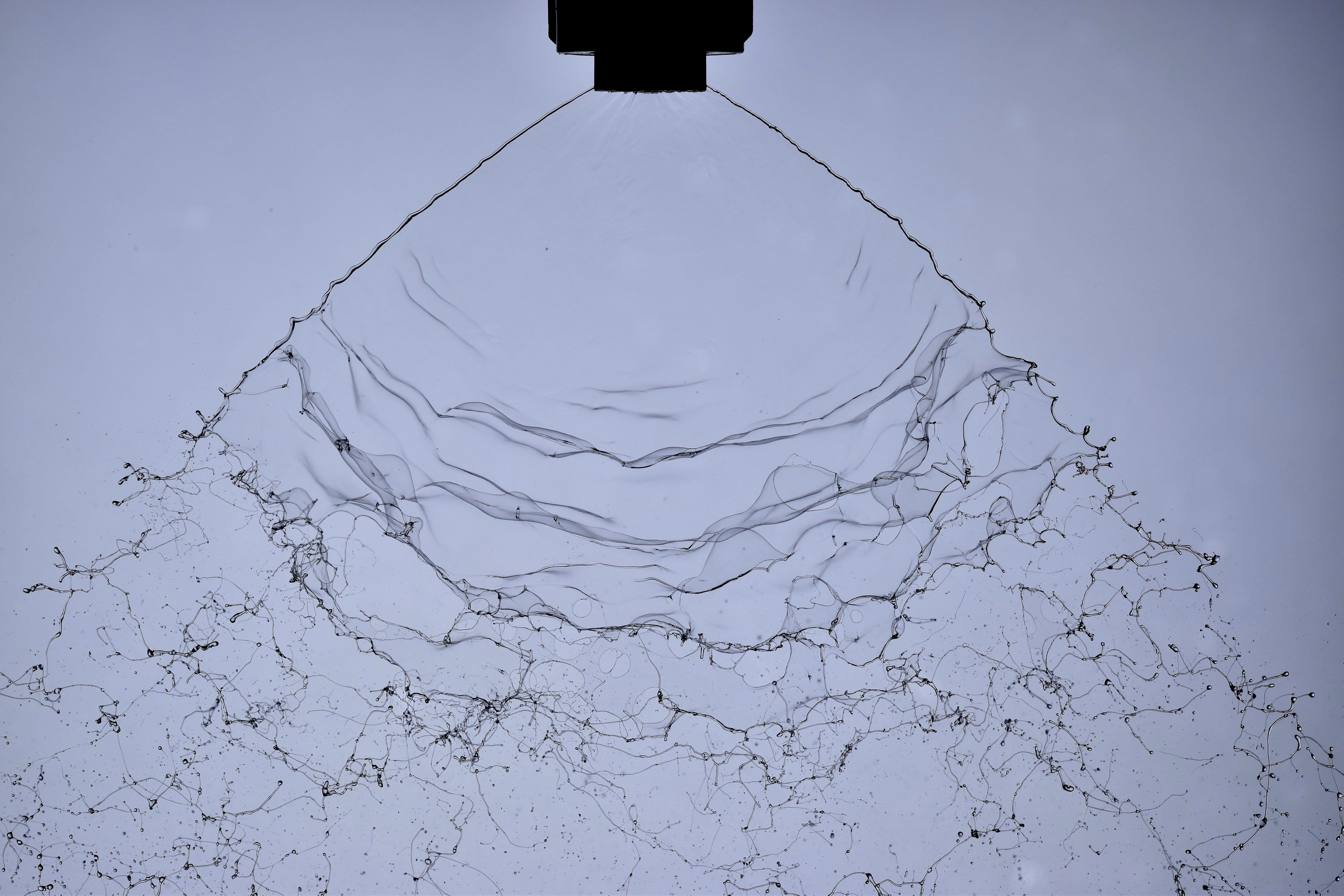 Back to projects
Back to projects

Droplet sizes and adhesion properties in sprays
- Supervisor:Prof. dr. Daniel Bonn
- Research Team: Rick Sijs, Antoine Gaillard, dr. Stefan Kooij
- Goal: To investigate the role of viscoelasticity and of surfactants in liquid sprays.
- Info: D.Bonn
General context The Netherlands is the second agricultural country in the world, behind the US. One of the major challenges the Netherlands is facing in the 21st century is pesticide pollution of the surface waters which eventually become our drinking water. The spray drift problem is the main culprit of surface water pollution: small droplets created during the spraying of pesticides drift away with the wind, and end up in the surface waters. The bounce-off of droplets on the hydrophobic crops is also an important cause of pollution of the surface water. An astonishing figure is that over 50% of the average crop protection spray reach a destination other than their target species; the rest is lost to the soil, groundwater and surface water. To improve the efficiency of the spraying process, spray additives can be added to the spraying liquid. Conventional additives are mainly surfactant-based, making the spray deposition more efficient, but having a negative impact on the spray drift of pesticides. Moreover, too many additives are environmentally harmful. Polymeric additives are scarce but can improve spray deposition compared to surfactant-based additives and at the same time decrease spray drift by increasing the droplet sizes.
Goal of the project We started this experimental and analytical project by deriving a comprehensive model for the breakup mechanism of simple sprays before examining the role of surfactants-based additives. We are currently investigating the role of polymer additives on the size distribution of the emitted droplets, which is measured via a laser diffraction method. We find that polymer addition results in the formation of bigger droplets on average, as well as a broader distribution of sizes compared to the pure Newtonian solvent. We link these changes in droplet sizes to changes in the properties of the spraying sheet extruded from the nozzle, such as the length beyond which the sheet breaks up and the wavelength of the “flapping” instability responsible for the sheet fragmentation. We also aim at exploring the spraying properties of emulsions as well as the role of wind in the breakup mechanism (aerial spraying). We also need to understand what causes spray droplets to either attach to the target plant or to bounce off it. To this end, we perform drop impact measurements using high-speed imaging. Our current results show that dynamic surface tension is a key parameter of the problem and we aim at expanding this investigation further to include the influence of, e.g., polymer additives.
